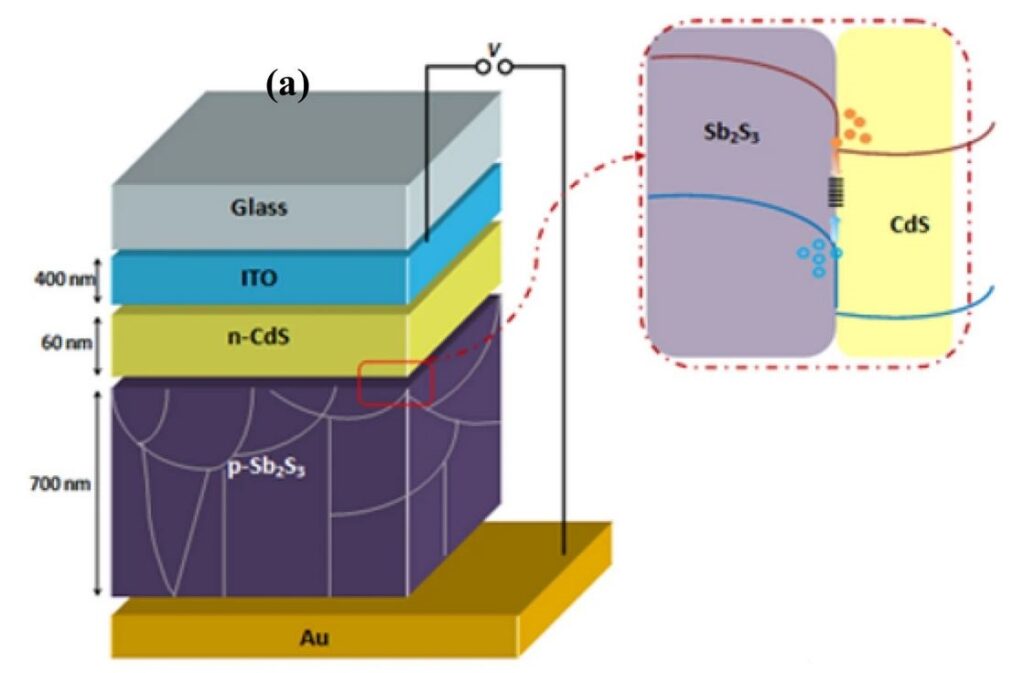An international research group has analyzed the main barriers that prevent antimony trisulfide solar cells from achieving satisfactory energy conversion efficiencies and proposed a set of optimization parameters that could bring them closer to commercial production.
An international research team led by the Bangladesh Atomic Energy Commission has developed a new design for thin-film solar cells based on antimony trisulfide (Sb2S3)
This kind of cell typology is far from reaching commercial production so far due to the low crystallinity and high resistance of the Sb2S3 film, which affects efficiency. However, Sb2S3 has a good band gap, ranging from 1.70 to 1.90 eV, and a remarkable light absorption coefficient, and remains a promising material for future PV cell applications.
With this in mind, the researchers examined transport mechanisms, resistance and defects in Sb2S3 cells. “The novelty of this work lies in the detailed theoretical research of Sb2S3 solar cells, specifically aimed at the complex interplay of different transport mechanisms such as tunneling-enhanced recombination, Sb2S3/CdS interface recombination and non-radiative recombination,” they explained.
To address these barriers, the research group adopted a modeling framework to analyze transport mechanisms and their interactions. “The primary objective of this study is to rigorously determine the dominant recombination mechanism,” the report said, noting that other factors influencing a Sb2S3 cell efficiency are doping of the cadmium sulfide (CdS) layer, thickness, band gap and affinity.
The scientists also examined the effects of shunt resistance (Rs) and series resistance (Rs) on cell performance, as well as the impact of interfacial defects at the CdS/Sb2S3 couple.
The proposed modeling was applied to a conventional Sb2S3 cell structure with a glass-coated indium tin oxide (ITO) substrate, a CdS layer, an Sb2S3 absorber and a gold (Au) metal contact. This analysis showed that increasing CdS doping and thickness improves the generation and separation mechanisms by increasing the electric field and absorption rate.
“The optimized solar cell configuration shows significant improvements with a high short-circuit current density of 9.5 mA cm−2an open-circuit voltage of 1.16 V, a fill factor of 54.7% and a remarkable 30% increase in conversion efficiency compared to conventional solar cells,” the scientists said, adding that the proposed cell design can achieve an efficiency of 11.68% reaches. which would be comparable to 6.5% for a non-optimized device.
“The simulated work not only sheds light on current limitations and possibilities, but also lays the foundation for future research directions,” the team concluded.
The new cell architecture was introduced in the study “Investigation of transport phenomena and recombination mechanisms in thin film Sb2S3 solar panels,” published in scientific reports. The research team includes scientists from the Algerian laboratory HNS-RE2SD, the Universidad Autónoma de Querétaro in Mexico, the Indian Saveetha Institute of Medical and Engineering Sciences and the Chettinad Academy for Research and Education, as well as from King Saud University in Saudi Arabia and Yeungnam University in South Korea.
This content is copyrighted and may not be reused. If you would like to collaborate with us and reuse some of our content, please contact: editors@pv-magazine.com.

